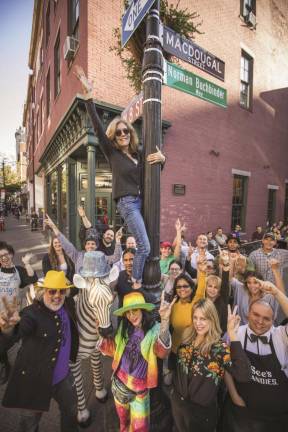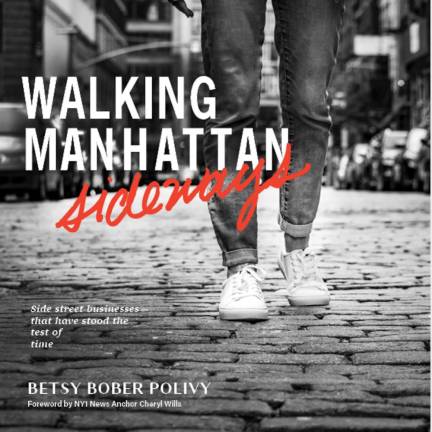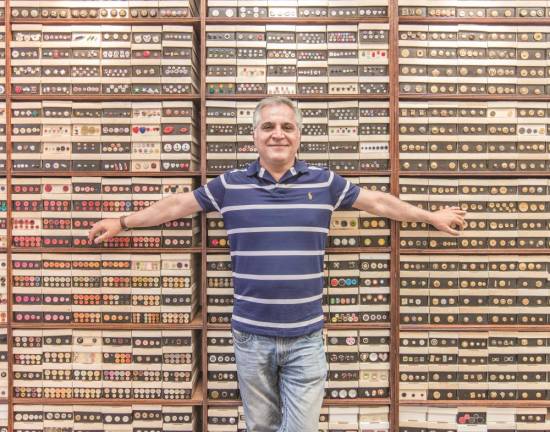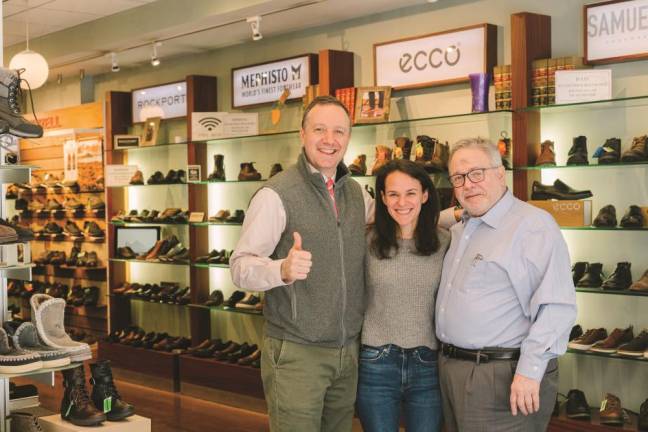For Betsy Bober Polivy, what started as an ambitious itinerary turned into a cherished experience. After raising her family in Westchester, she moved back to Manhattan with her husband, and as an empty nester, came up with a meaningful project to occupy her time. She would visit every side street on the original grid, starting at 1st Street and ending at 155th.
Although many thought it was an impossible feat, she was undeterred, beginning each morning “exhilarated” to explore the hidden gems waiting around every corner. And after six years on foot, which included days of inclement weather and even a bout on crutches, she completed the ambitious journey, chronicled on her website Manhattan Sideways. This invaluable resource enables users to search for a street and discover each business on it, spanning from east to west.
The most rewarding part of Polivy’s pedestrian pilgrimage was meeting New York business owners and learning their stories. And as a former bookstore owner and daughter of an award-winning biographer, she always planned on compiling them all into a book. When the pandemic hit, she felt the time had arrived to self-publish this labor of love. “Walking Manhattan Sideways” features 175 small businesses, including bookshops, bars, firehouses and antique shops, and Polivy called each and every proprietor to read them their entry. “Some of them cried, because they are all so emotional right now and just suffering so much, and I was just bringing a little bit of light into their life,” she said.
Tell us how the idea for Manhattan Sideways came about.
I knew that I needed something to do that was constructive. I loved my friends and going to museums and galleries, but just couldn’t do that on a daily basis. So I started walking and discovering; I’ve always loved the city, I’ve lived [here] before. I was particularly on the side streets and discovering these fun new places that I didn’t know about. I had this crazy thought and it was swirling around in my head for quite some time until I had the nerve to let it out of the bag. And my husband and my kids just jumped on it and my kids said, “We want to make you a website, but you have to start on 1st Street and have to do it in consecutive order.” And the question was, “Where do I stop?” My husband and I had been invited to the opening of an exhibit at the Museum of the City of New York called “The Original Manhattan Grid,” and when we got there, there was this big map, and we both looked at each other and were thinking the same thing.
What was a typical day like for you when you were working on it?
I would walk or subway, depending on how far up I was. I would go all the way to the East Side. I always walked east to west. And then I would document every place and go in and introduce myself. And sometimes, a business owner was there and I could sit down and hear their story. Other times, I made appointments and went back. I had to be persistent because people didn’t understand; everyone thought I was charging. And I would always have to say, “I want to help you. I know that sounds unusual.” And it didn’t matter, rain or shine, 17 or 100 degrees. I had a mission and was not going to stop until I got to 155th Street. I actually broke my foot my sixth year, when I was almost finished. I was in the 130s at the point, and the doctor said it was purely from walking. So I was on crutches for an entire summer, and I still did it. There’s a picture of me at 155th Street on the crutches.
Your chapter, “Family Affair,” focuses on multi-generational businesses. What is one example?
Tip Top Shoes began in 1940 and was owned by a German couple. And then Lou Wasserman, who came from Israel, took it over, and then moved it to 72nd Street. Then his son, Danny, ran it and now his kids expanded the business. His son, Lester, opened West NYC a few doors down, which is a sneaker shop, and daughter, Margot, opened Tip Top Kids. I literally lived across the street and my grandchildren, whenever they would come, the second they got out of the car, wanted to go across the street and get new shoes, which we always did. This family is so close. They all live on different floors of the same building on 72nd Street as well, not the same building that the store is in. That’s a very sweet story.
Another part of the book highlights the accomplishments of immigrants. Tell us a story that touched your heart.
Lou Lou Buttons. His name is Roz Farhardi and when he was 17 years old and living in Iran, he applied to universities in the States and got accepted to Brooklyn Polytechnic. He went to his mom to tell her and she said, “Where is America?” She didn’t read or write and they had no money and she took a few little jewels, quote unquote, that she had and sold them, and the next day, she went to her son and put the money in his hand and said, “You go follow your dream.” So he came here and was an engineer and was working one day and went into a button shop during his lunch and he found buttons that he liked and asked if he could order them and they said it would take a few months. And he looked at the buttons and said, “A few months? I could make these.” And he went home and made them and started his button business. And now he does buttons for Broadway, the Metropolitan Opera, Ralph Lauren. He’s still a very tiny business; he works really hard.
Being Italian, I wanted to know why you chose to include a chapter on Italian restaurants. What have been some memorable dishes you sampled?
I found that there are more Italian restaurants that have, quote unquote, survived the test of time than any other business. I did a food chapter as well, but there were too many, so either I was going to have to cut out a bunch of them that I loved, or just give them their own space. This has definitely been a culinary journey, there’s no question. I got such an education about the restaurant business and going [into] the kitchens and behind the scenes. To me, it was a privilege to get to go back there. I have to tell you that I’m a vegetarian, so a lot of restaurants were very disappointed. But I was always very careful because I never wanted to offend. Usually the photographer with me would eat anything, so it worked out. Eggplant Parmesan, that’s my favorite. Every Italian restaurant has it and it’s interesting to see different takes on it, like some of them stack it, some are old-world.
To learn more about Manhattan Sideways, visit www.sideways.nyc
Betsy’s book, “Walking Manhattan Sideways” is available at Three Lives & Co, Shakespeare & Co, Corner Bookstore, Books of Wonder and www.gosideways.nyc/book



